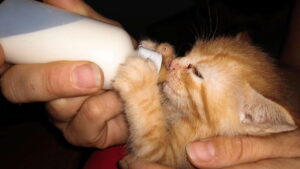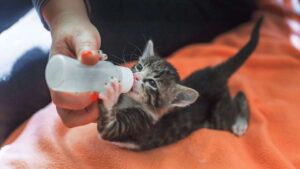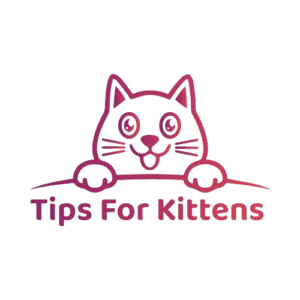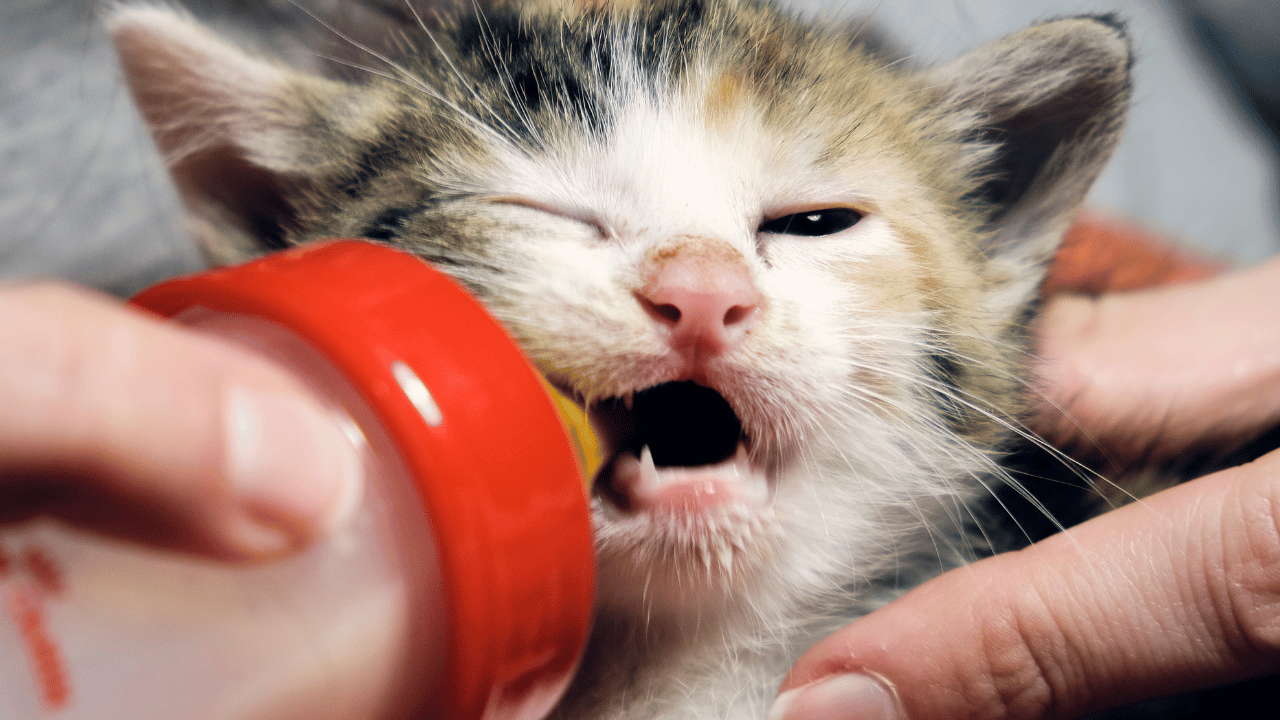Bootle Feeding Kittens for Better Growth can be rewarding and challenging. In case you are a foster mum to just one tiny cat or a whole litter of them, it is important to get acquainted with the basics of bottle feeding, tips on feeding kittens with formula, weaning, and lots more.
Also Read: Best Food for Kittens: A Guide to Nutrition for Growing Cats
Why is It Necessary for Bootle Feeding Kittens?
When kittens are weaned or are separated from their mother and cannot feed, it is only humans that can take care of their feeding requirements. When nursing with spit from a bottle, kittens get nutrition, fluid, and even some closeness, allowing them to develop robust and healthy kittens.

Supplies Required to Bootle Feeding Kittens
Let’s prepare for actually doing it: try to gather all the essentials first, so you do not have to waste time looking for them during the procedure. The right tools make the process easier, faster, and more efficient. Some of the crucial things are:
- Kitten formula: Kittens should not be given adult cow’s milk, hence it is important to stock specially designed kitten milk squash.
- Feeding bottle: Ware a bottle designed for small animals.
- Soft towel: For nursing periods, keep the baby cat on a warm easy towel. This acts as a spinal cord.
Also Read: Top 5 Homemade Kitten Food Recipes for Optimal Health
1. Start by Giving a Bootle Feeding Kittens
Key Points to Remember When Bottle Feeding Newborn Kittens
When you are ready to start bottle feeding, make sure the environment around you is calm. Take such procedures so that the kitten is fed comfortably while also ensuring its safety.
Step 1: Prepare the Formula
- The formula should be prepared as directed on the label.
- It should only feel warm and not hot.
- Never put the formula in a microwave; rather, heat it in a warm water bath.
Step 2: Position the Kitten Properly
To avoid rolling over onto their back which can result in choking, place the kitten on its belly so that the head is in a natural position. Ensure that the kitten is comfortably secured in place so that feeding can be accomplished easily.
Step 3: Proceed with Feeding
- First, angle the bottle gently so the child can begin sucking on the nipple.
- Allow the kitten to suckle itself and do not force the bottle by squeezing it or pushing the nipple into the mouth to prevent the formula from entering the lungs.
- Be patient with the newborn kittens and let them suckle from their nipples as they have just been bottle-fed.
Also Read: What to Feed Kittens Without Mother?
2. Kitten Formula Feeding Tips
It does take a lot of time and energy to feed the newborn kittens. Here are some useful tips that will make kitten formula feeding easier for you and the kitten
Tip #1: Schedule Meal Times
In the first 2–3 weeks, kittens should be fed every 2–3 hours. If there are set times for feeding, kittens tend to get used and this is a critical milestone for their development
Tip #2: Watch the Quantity
It is quite common that an infant kitten will take only a small quantity of formula in one feeding. One should take care of the kitten’s stomach as it would be harmful to overfeed the kitten.
Tip#3 How to Properly Clean the Bottles
Bottles should be cleaned each time with warm soapy water after feeding in order to avoid any possible affections. There are certain procedures that one must follow to ensure the safety of the kitten.
Tip#4: Humans: Please Do Not Forget To Burp The Baby after feeding
Kittens need to be burped just as babies do after food intake so that there is no air trapped within the body. The kitten should be patted on the back and there should be a sound indicating there is a release of gas.
Also Read: Can Kittens have Adult Cat Food?
3. How to Stop Bootle Feeding Kittens Milk
After some time, though, kittens will begin to gain interest in food that is not liquid. Around four to five weeks, bottling is usually stopped and this is required for the kittens’ development.
When You Know a Kitten Has Weaning Potential
- Sucking on a bottle’s nipple and moving it back and forth
- Showing interest in what it may be made of and trying to bite or lick it
- Showing increased physical movement as well as activity level
The Process for Weaning Kittens From the Bottle
- A Slow Approach to Dishes that Contain Soft Foods: A small wet food and kitten formula mixture in a shallow dish should be put in place where the kittens are allowed to lick the mixture but not bury their nose in it.
- Bottle Feeding to Be Limited to Necessary TimesAfter the bottle is repeatedly offered in the morning and night only in order to allow for solid food intake during the day.
- Look Out For Fulfilling SignalsSmall refuges for nourishment are common for kittens. It should be ensured that enough amount of solid food is consumed regularly before the baby’s bottle feeding is stopped.
Also Read: How Long Can Kittens Go Without Food
4. Best Bottle For Kittens Feeding:
Kitten feedings are often made easier with the use of the appropriate type of kittenthoma bottle. The first step is to use a screw bottle with a small or soft clip. Here’s a list of things to consider:
-
Seek As Much As Possible
It is often easy for kittens to remain latched onto a bottle due to its soft nipple. Such comfort enables the kitten to suck the mother’s nipple with ease, eliminating the chances of any struggles during feeding.
-
Tamadetop Utudethanane Lilatelalav
Kittenthoma slippery nipple for honest breeding may be commonly used, but great care should be exerted while using these thus requiring careful consideration.
-
Tell Us Which Side of a Bottle You Would Use
A cream-coloured bottle is simple to use because of the container’s indoor capacity. This will reduce the chances of guessing how much the kitten eats from one feed.
Also Read: Maine Coon Cat Kittens – Important Characteristics of Cats
5. Kitten Formula Feeding Tips for Abnormal Circumstances
In certain situations, kittens may have problems that have to be taken into consideration. Here are some more kitten formula feeding tips to apply when you are looking after kittens who need special care for some reason or other.
-
Bootle Feeding Kittens That Are Weak or Premature
If the kitten is weak or underdeveloped, it will require feedings more often than regular kittens. You may also have to assist the kitten in latching by placing the nipple near its mouth.
-
Diarrhea and Other Digestive Problems
As the kitten becomes familiar with the formula, a few kittens may develop mild digestive problems. Do not hesitate to consult the vet in case these mild issues become a constant and persistent one.
-
How to Deal with Kittens Who Refuse to Feed
Sometimes Kittens do not want to feed themselves because they are sick, tired, or unhappy. Always make sure that the formula is not scalding hot and that the kitten is relaxed before attempting.
Also Read: Exploding Kittens Rules – Best Tips for Your Kittens
6. How to Create a Bootle Feeding Kittens Schedule?
Bottles should always be accompanied by timeliness. By scheduling the feed, it will be possible for the kittens to obtain the essential nutrients and for you to keep track of their feeding times as well.
One of the Instances of a Schedule
- Weeks 1–2: Kittens should be put to feed every 2–3 hours till the third week. Always remember to include weaning feeds throughout the night to avoid any health complications.
- Weeks 3–4: Please feed on every 3–4 hour interval. Night feedings can be eliminated once the age of the kittens reaches the fourth week.
- Weeks 5–6: Please begin to introduce soft, solid foods and eliminate the use of the bottle to two feedings in a day.
Also Read: When Does A Kitten Start Eating Food and Drinking Water?
7. Best Practices for Bonding While Bottle Feeding
As well as nourishment, bottle feeding is also an occasion to gain your kitten’s trust as forth is a moment to bond. Here’s how to optimally bond and create a positive experience for both of you.
- Please Restrict the Kitten Hold: Please feed the kitten near your body and do your best to talk to the kitten in a soft even tone.
- Please Maintain Eye Contact with the Cub: Making the kittens seek out their owner’s eyes is a great way to increase food-seeking behaviours.
- Normal Patience and Consistency is the Key: Any animal for that matter needs consistency and patience to develop especially when raised apart from their mother.

Conclusion
Bootle Feeding Kittens who are bottle-fed is stressful and involves a lot of attention to detail alongside a great deal of patience. By applying the art of performing bottle feeding correctly with sufficient weaning tips and true kitten formula feeding tips to kittens then we are likely to achieve a lot. In this regard, it is necessary to keep in mind that all kittens are entirely different and it is important to change one’s strategies thanks to which these kittens would develop for the better.

